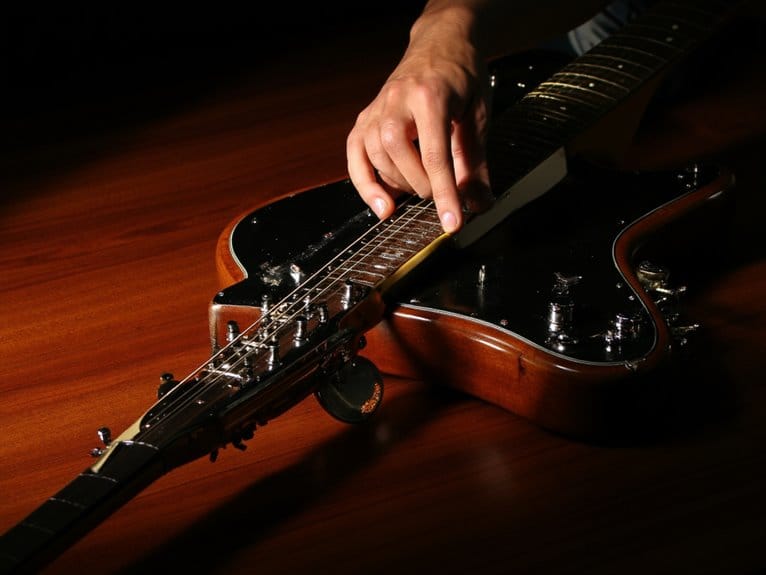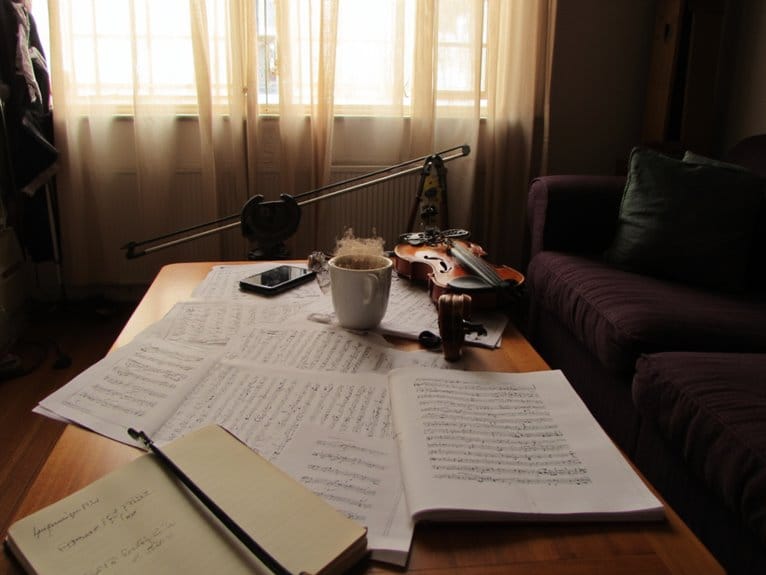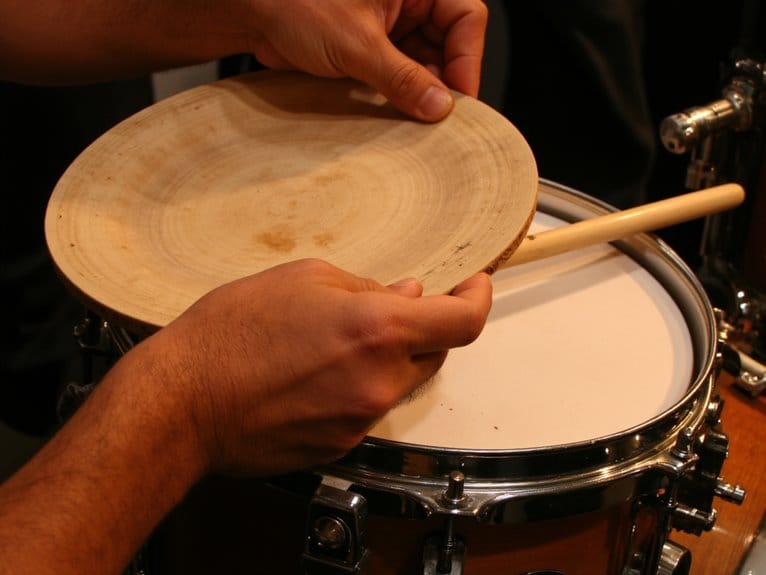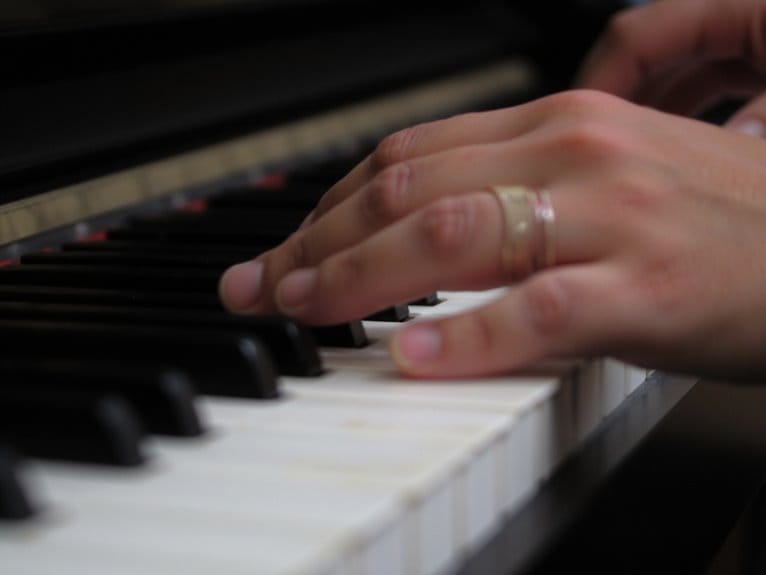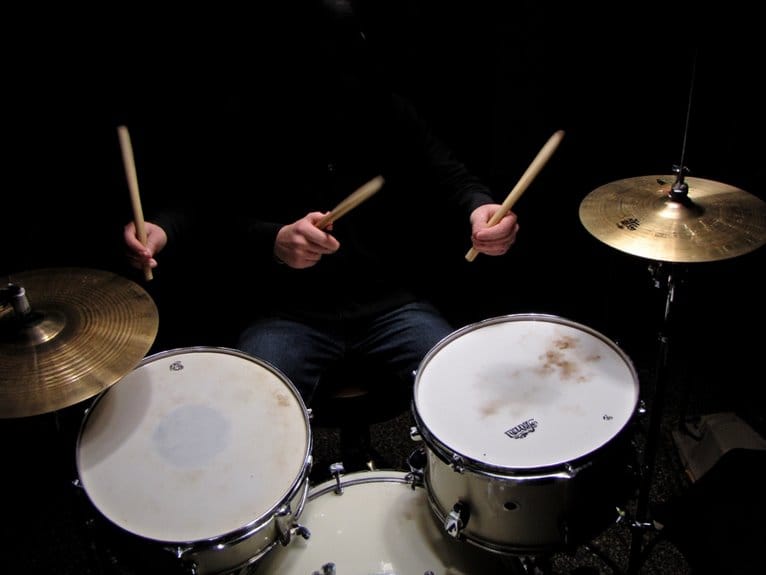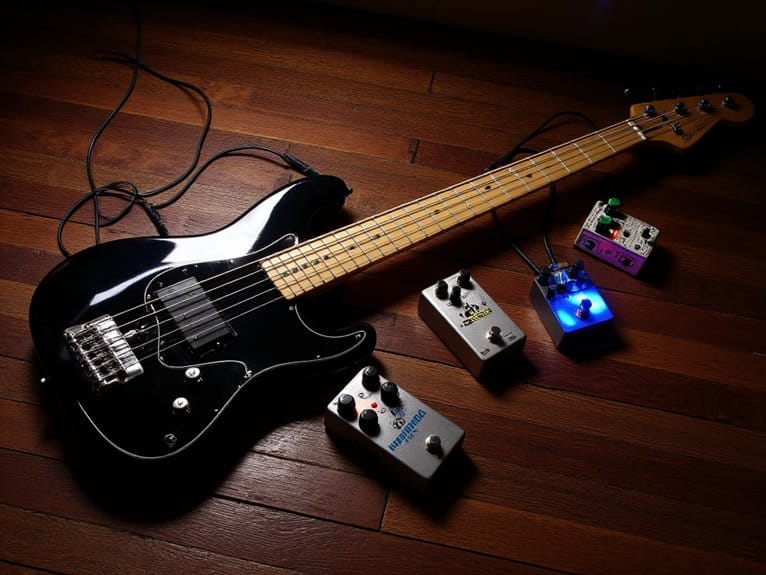Two-Handed Tapping on Bass: Expanding Your Range
Two-handed tapping transforms your bass into a harmonic powerhouse, allowing you to execute complex chord progressions while maintaining walking bass lines simultaneously. You’ll position your left hand fingers upward and right hand downward, focusing on hammer-ons and pull-offs for finger independence. This technique expands your role beyond traditional rhythm section work, enabling piano-like chordal capabilities in jazz II-V-I progressions and contemporary fusion styles. Mastering proper equipment setup and practice strategies reveals even greater possibilities.
We are supported by our audience. When you purchase through links on our site, we may earn an affiliate commission, at no extra cost for you. Learn more.
Notable Insights
- Master proper hand positioning with left hand fingers pointing upward and right hand fingers pointing downward for optimal technique.
- Practice hammer-ons and pull-offs consistently to develop finger independence and maintain even volume across both hands.
- Use low string action and lighter gauge strings to improve articulation and speed in tapping passages.
- Apply tapping in jazz contexts where left hand plays walking bass while right hand adds chord extensions.
- Combine tapping with slap techniques to create hybrid textures that expand bass’s role in contemporary fusion styles.
Mastering the Fundamentals of Two-Handed Technique
Transform your bass into a polyphonic powerhouse by mastering two-handed tapping, a technique that’ll fundamentally change how you approach the instrument’s harmonic and melodic possibilities. By incorporating fretless bass intonation techniques, you can achieve a level of expressiveness that enhances your two-handed tapping. This skill allows for greater melodic fluidity and nuanced articulation, expanding your musical vocabulary. As you explore these concepts, you’ll discover new ways to blend chords and melodies seamlessly, transforming your performance style.
Start by developing proper hand positioning, with your left hand fingers pointing upward while your right hand fingers point downward, creating symmetrical movement across the fretboard.
Focus on hammer on exercises that build finger independence in both hands, starting slowly to guarantee clean, even articulation before increasing tempo.
Pull off techniques require equal attention, as your right hand must develop the same controlled finger strength traditionally reserved for your fretting hand.
Practice deliberate, measured movements that emphasize consistent volume and clear note production, treating each finger as an independent voice in your expanding musical vocabulary.
For recording practice sessions, consider using a high-quality microphone with noise cancellation technology to capture the subtle nuances of your tapping technique without interference from room acoustics or background sounds.
When documenting your progress, an affordable audio interface with phantom power capabilities will ensure your condenser microphones capture every detail of your two-handed technique development.
Musical Applications in Jazz and Contemporary Styles
When you’re ready to explore jazz applications, two-handed tapping transforms your bass into a harmonic instrument that rivals piano in its chordal capabilities, though I’ll admit it takes considerable practice to make those complex voicings sound effortless.
Two-handed tapping elevates bass into a chordal powerhouse, though mastering those effortless-sounding jazz voicings demands serious dedication.
Your left hand establishes walking bass foundations with roots and fifths, while your right hand adds chord extensions and tensions that create sophisticated jazz harmonies.
These tapping applications shine particularly well on II-V-I progressions, where you can seamlessly blend melodic lines with harmonic support.
Contemporary fusion styles benefit enormously from this technique, as you’re able to combine rhythmic slap elements with chordal tapping for hybrid textures that sound remarkably full and orchestrated.
Essential Equipment and Practice Strategies
Having mastered those sophisticated jazz applications, I’ve learned that your equipment selection can make or break your two-handed tapping journey, and frankly, I wish someone had told me about these specifics when I first started fumbling around with this technique.
You’ll want low string action with lighter gauge strings, which dramatically reduces the force needed for clean articulation. Basses like Dingwalls offer optimized neck construction and string spacing that facilitates faster finger movement across the fretboard. For players seeking versatility in tone and playability, a 6 string bass guitar can be an excellent choice, expanding the range to lower and higher notes without sacrificing comfort. These instruments often feature a wider neck and additional strings that enhance chord voicings and melodic possibilities. Investing in a well-crafted 6 string bass guitar can elevate your performance and allow for greater expression in your playing style.
Your amplifier settings matter too-boost those mid-range frequencies to help tapped notes cut through the mix with clarity.
For practice exercises, start with symmetrical hand positioning, using all four left-hand fingers while focusing on your right hand’s index, middle, and ring fingers for maximum reach and coordination development.
On a final note
You’ve now got the essential framework for two-handed tapping that’ll transform your bass playing from conventional to extraordinary. While mastering these techniques takes dedication-trust me, I’ve spent countless hours perfecting hammer-ons and pull-offs-the expanded range and harmonic possibilities you’ll uncover are worth every practice session. Start slowly, focus on clean note articulation, and don’t get discouraged when your fingers feel like they’re speaking different languages initially.


